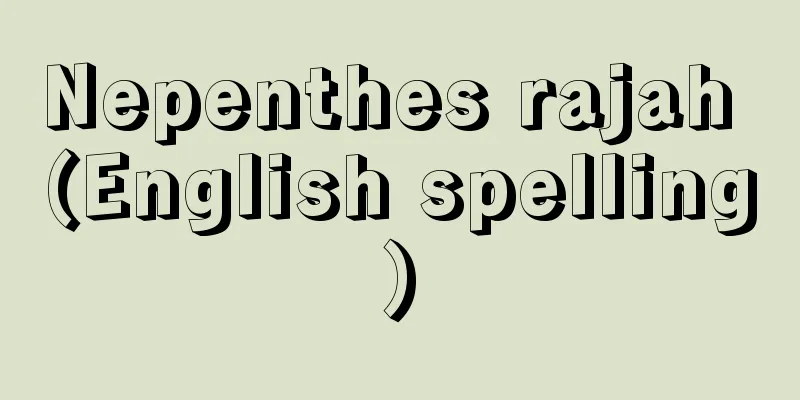Utagawa Kunisada - Utagawa Kunisada

|
An ukiyo-e artist from the late Edo period. A pupil of the first Utagawa Toyokuni, his name was Sumida and was popularly known as Shozo. In 1845 (Koka 2), he shaved his head and changed his name to Shozo. His talent as an artist was recognised at an early age and he became a pupil of Toyokuni. He is thought to have started exhibiting his work around 1802 (Kyowa 2) or 1807 (Bunka 4). In his early days, he used the artist names Ichiyuusai and Gototei, and later went on to use several other names, including Kochoro, Fubosanjin, Fucho, Gepparo, Kitabaido, Tojuen, Kinraisha, and Kiou (which he started using at the age of 77). In 1844, he took on the name Toyokuni II, but his first name, Utagawa Toyoshige (1802-?), had officially taken on the name, and it is said that his aggressive approach earned him a bad reputation at the time. For these reasons, for the sake of convenience, Kunisada's Toyokuni is now counted as the third. He died on December 15, 1281, at the age of 79. His range of work was extremely wide and varied from the time of Kunisada to his later years, but his finest works can be seen in the early period when he was under the name of Godotei, and there are many excellent triptychs and large-headed portraits of beautiful women. Under the name of Kochoro Kunisada, he is known for his illustrations in Ryutei Tanehiko's collection of comical volumes, Nise Murasaki Inaka Genji (1829-1842). After that, when he began to call himself Toyokuni, he fell into a state of promiscuity, but his large-headed portraits of actors are somewhat noteworthy. However, he formed the greatest influence in the ukiyo-e world at the end of the Edo period, and it is said that he produced the greatest number of works in his lifetime of all ukiyo-e artists, so his achievements are by no means small. [Nagata Seiji] "Suzuki Juzo (ed.) Ukiyo-e Taikei 10 Kunisada/Kuniyoshi/Eisen" (1976, Shueisha) [Reference] |National Diet Library Utagawa Kunisada's "Illustrated Guide to Famous Women of the Ukiyoe: Geisha in the Edo Period" Triptych, circa 1815-1817 (Bunka 12-14), National Diet Library Utagawa Kunisada "The Scene of Kagura's Moon Showing Her Face" National Diet Library Utagawa Kunisada, "Map of Shinagawa, one of the Fifty-three Stations of the Tokaido..." National Diet Library Utagawa Kunisada "Contemporary Beauties: A Shower at Mt. Fuji" National Diet Library Utagawa Kunisada "Beautiful Fan Painting, Ryogoku" 1852 (Kaei 5), National Diet Library Utagawa Kunisada (Toyokuni III) "A Selection of Thirty-six Poems from the Viewpoint of the… This is a festival at Otori Shrine, also known as "Tori no Machi" (City of Birds) or "Otori-sama" (Sacred Bird). During the Edo period, the shrine was crowded with actors and merchants praying for good fortune and prosperity in business. Visitors purchased rakes with measuring cups and Okame masks as lucky charms that would rake in good fortune. Triptych 1860 (Man'en 1), National Diet Library . Utagawa Kunisada (Toyokuni III) "Ichiyou Rai Fuku Tori no Ichi" The custom of selling rakes as lucky charms at the Tori-no-ichi festival in November has been around since the Edo period. One of a triptych, 1854 (Kaei 7), National Diet Library . Utagawa Kunisada (Toyokuni III) "Shimotsuki, December..." Part 4, Part 1, Written by Ryutei Tanehiko, Illustrated by Utagawa Kunisada, Published in 1831 (Tenpo 2), Owned by the National Diet Library "Genji from the Countryside" Source: Shogakukan Encyclopedia Nipponica About Encyclopedia Nipponica Information | Legend |
|
江戸後期の浮世絵師。初世歌川豊国(とよくに)の門人で、角田(すみだ)氏、俗称を庄蔵(しょうぞう)といい、1845年(弘化2)剃髪(ていはつ)して肖造と改めた。幼くして画才を認められて豊国の門に入り、1802年(享和2)あるいは1807年(文化4)ごろから作品を発表し始めたとみられている。画号は、その初期に一雄斎(いちゆうさい)、五渡亭(ごとてい)を用い、のちに香蝶楼(こうちょうろう)、富望山人(ふぼうさんじん)、富眺(ふちょう)、月波楼(げっぱろう)、北梅戸(ほくばいど)、桃樹園(とうじゅえん)、琴雷舎(きんらいしゃ)、喜翁(きおう)(77歳から使用)など、ほかに数号がある。1844年2世豊国を称するが、正式には初名歌川豊重(とよしげ)(1802―?)が2世を襲名しており、その強引さから当時相当の悪評がたったといわれる。以上の理由から現在では便宜上、国貞の豊国を3世と数えている。元治(げんじ)元年12月15日、79歳で没。 その作域は国貞時代より晩年まで実に幅広く、多岐にわたっているが、五渡亭を号した初期にもっとも佳作がみられ、三枚続や大首絵(おおくびえ)風の美人画に優品が多い。香蝶楼国貞の名義では柳亭種彦の合巻『偐紫田舎源氏(にせむらさきいなかげんじ)』(1829~1842)の挿絵が知られる。以降、豊国を称してからは乱作に陥るものの、役者の大首絵などには多少みるべきものがある。しかし、幕末の浮世絵界では最大の勢力を形成し、生涯に描いた作品数も全浮世絵師中、最大数量であったといわれ、その功績もけっして小さくはない。 [永田生慈] 『鈴木重三編『浮世絵大系10 国貞/国芳/英泉』(1976・集英社)』 [参照項目] |国立国会図書館所蔵"> 歌川国貞『浮世名異女図会 江戸 町芸者… 三枚続 1815~1817年(文化12~14)ころ国立国会図書館所蔵"> 歌川国貞『神楽月顔見せの光景』 国立国会図書館所蔵"> 歌川国貞『東海道五十三次之内 品川之図… 国立国会図書館所蔵"> 歌川国貞『当世美人合 富士詣夕立』 国立国会図書館所蔵"> 歌川国貞『美人団扇絵 両国』 1852年(嘉永5)国立国会図書館所蔵"> 歌川国貞(3世豊国)『見立三十六歌撰之… 「酉のまち」、「お酉様」ともいわれる鷲神社の祭礼。江戸時代には開運・商売繁盛を願う役者や商人などでにぎわった。桝やおかめの面をつけた熊手は福徳をかき集める縁起物として参詣者が買い求めた。三枚続 1860年(万延1)国立国会図書館所蔵"> 歌川国貞(3世豊国)『一陽来復酉の市』 福をかき集める意から、熊手が縁起物として11月の酉の市で売られる風習は、江戸時代からみられた。三枚続の一 1854年(嘉永7)国立国会図書館所蔵"> 歌川国貞(3世豊国)『十二月の内 霜月… 第4編 上 柳亭種彦作 歌川国貞画 1831年(天保2)刊国立国会図書館所蔵"> 『偐紫田舎源氏』 出典 小学館 日本大百科全書(ニッポニカ)日本大百科全書(ニッポニカ)について 情報 | 凡例 |
Recommend
Kyoto official appointment - Kyokanjimoku
...In the mid-Heian period, for example, the cere...
Khun Chang Khun Phaen
This is the most Thai work of classical Thai liter...
Platypus lewisi (English spelling) Platypuslewisi
…It is found throughout Japan, boring holes in br...
University of Montpellier - Montpellier University
A traditional university in Montpellier in the sou...
Partridges - Partridges
…Among the partridges, the European partridge ( P...
Church of Il Gesù - Il Gesù Church (English name)
The central church of the Society of Jesus in Rome...
Khalij al-'Arabī (English spelling)
…the gulf between the Iranian plateau and the Ara...
Ibo - Ibo (English spelling)
The Igbo people are an ethnic group living in sout...
Huipiri - Huipiri
…A tunic for women found in Central America. Orig...
Iwakura Style
A surviving school of Japanese swimming. One of t...
Sakutaro Hagiwara
Poet. Born November 1, 1886 in Maebashi City, Gun...
Alegar - Alegar
…Vinaigre is a compound word of vin (grape wine) ...
Hylobates lar (English spelling) Hylobateslar
...Also called Gibbon. Widely distributed through...
Mithradates II
…Reigned 124 or 123 BC - 88 or 87 BC. Also known ...
Epsomite - Epsomite (English spelling)
A soluble magnesium sulfate hydrate mineral that ...





![Yamuna [river] - Yamuna](/upload/images/67cd0fe197eb8.webp)



